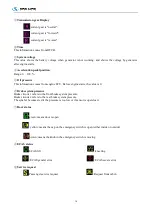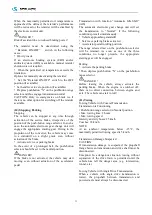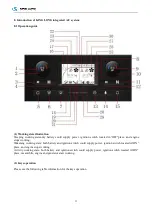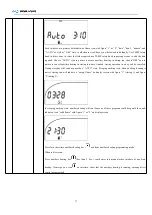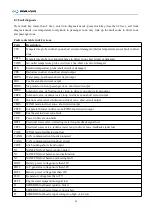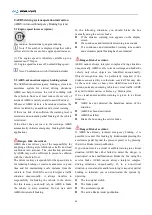
30
(5) Starting
After selecting the appropriate driving range, wait
for approx. 1 to 2 seconds, then release the brake
and accelerate.
Depending on vehicle configuration and loading
state, the vehicle may start at low speed on a level
track or on a slight uphill grade after release of the
brake. If a lower driving speed is desired, this must
be realized through operation of the brake pedal.
DANGER!
•
In the event of reduced grip of the front wheels,
e.g. Due to black ice, locking of the front wheels
may occur.
The vehicle can then no longer be steered.
•
On major uphill grades, always accelerate with
the parking brake activated
Do not release the parking brake before you can
feel propulsion. RISK OF ACCIDENT caused by
vehicle rolling
backwards!
•
Fast rolling backwards in a forward gear, or
rolling forward in the reverse gear, is not permitted
and may result in stalling of the engine and loss of
steering support.
•
Always start with great care and gentle
acceleration when starting near persons or
obstacles in order to rule out any risks.
(6) Downhill Driving
Before driving down steep gradients, select driving
range 1, 2, or 3 on the push-button speed range
selector, as the situation may require. This limits
upshifts.
DANGER !
In an extreme case, the hold mode will be
cancelled to protect the engine. In such a case, the
transmission may shift up to the highest gear
irrespective of driving range selected.
(7) Change in Direction of Travel
Before changing from Forward to Reverse or vice
versa:
•
Bring the vehicle to a complete standstill.
•
Depress push button “N” on the push-button
range selector
(8) Kickdown (Forced Downshift)
To utilize maximum engine power, higher shift
points can be realized via the kickdown switch (see
illustration) or the CAN system (for acceleration or
on uphill grades).
•
Depress the accelerator pedal beyond the full-load
action point (kickdown position).
NOTE
Use of the kickdown function increases fuel
consumption.
(9) Retarder operation
The retarder is a gear-dependent hydrodynamic
brake which operates without wear. The retarder
should be used for every braking action. This
extends the life of the service brake. The retarder
can be operated via a hand lever and/or the brake
pedal. When control takes place exclusively via the
brake pedal, there is usually a rocker switch
“Retarder ON/OFF” on the instrument panel.
In the event of manual-lever control, the lever must
be returned to neutral position after each braking
action. Consult the vehicle operating instructions
for more details on retarder control.
Conditions for retarder operation
Retarder operation is accepted by the electronic
control unit only under the following conditions:
•
Accelerator pedal in idling position
•
A forward gear is engaged
•
The driving speed exceeds approx.3 km/h
•
The ABS system is not active
If any one of these conditions is not fulfilled with
the retarder engaged, the retarder will be
deactivated.

